
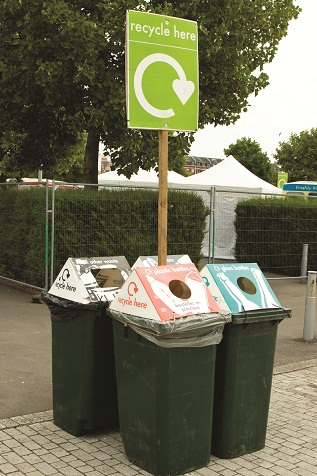 Sport remains one of the oldest means of assembling and connecting people. Even early on it was used as a tool to bring together otherwise divided masses, inspiring unity, support and healthy communities. Understanding this power, many have used sport to bring awareness and create social change. From promoting youth health and safety to supporting cancer research to increasing equality for all, professional sports franchises and sporting events have supported good causes for years. And, these teams and venues are beginning to realize another area in which they can have substantial positive impact – the environment.
Sport remains one of the oldest means of assembling and connecting people. Even early on it was used as a tool to bring together otherwise divided masses, inspiring unity, support and healthy communities. Understanding this power, many have used sport to bring awareness and create social change. From promoting youth health and safety to supporting cancer research to increasing equality for all, professional sports franchises and sporting events have supported good causes for years. And, these teams and venues are beginning to realize another area in which they can have substantial positive impact – the environment.
Sports franchises are some of the most recognizable and respected brands that exist today. Their events not only draw immense audiences both in-person and remotely, they inspire a loyalty among supporters that any brand would envy. According to recent polling, while only 14% of people say they pay attention to science, 46% say they pay attention to sports. This is one reason that sports can be a vehicle and impetus in encouraging people across society to adopt more sustainable behaviors.
It is well-known that putting on even a single sporting event requires a great deal of resources. They necessitate a large amount of time, planning, and money to pull off successfully in the eyes of the fans. With substantial energy and water consumption, considerable waste creation, and an extensive supply chain, these events can also leave a large environmental footprint. Fortunately, sports teams and venues are beginning to understand how they can more efficiently manage their events, reducing their environmental impact, saving money, and inspiring their fans in the process.
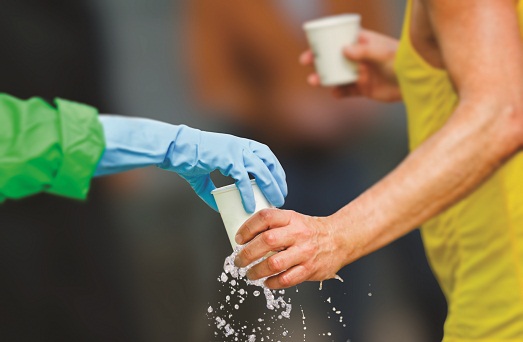 Many professional sports teams and global events have taken an interest in sustainability, starting at the basic level of the financial health of their organizations, and extending to the health of their communities and regions. Some sports franchises launched early greening initiatives at their respective facilities, but many amateur and recreational organizations are just beginning to explore the possibilities.
Many professional sports teams and global events have taken an interest in sustainability, starting at the basic level of the financial health of their organizations, and extending to the health of their communities and regions. Some sports franchises launched early greening initiatives at their respective facilities, but many amateur and recreational organizations are just beginning to explore the possibilities.
Most ‘greening’ initiatives began with the simple, yet sometimes tedious task of data tracking. According to baseball operators, in only three years, they were able to triple their league recycling rate from 4,000 tons to 12,000 tons simply because they started tracking the data – they started keeping score. The age-old adage of “you can’t manage what you don’t measure” soon caught on with the professional sports leagues as they realized the importance of keeping score and better understanding their environmental performance.
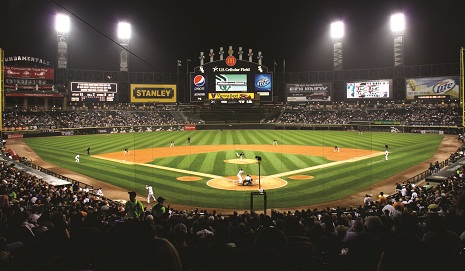 For example, in spring 2010, Major League Baseball became the first professional sports league to track environmental data across all teams and venue operations. For the past three years, the National Hockey League has managed a similar program, and there are other compelling examples across all leagues. Real, year-by-year data provides a better understanding of how sporting events affect the environment. Careful analysis of the data—along with collaboration with colleagues—can spark inspiration, innovative ideas, and a long-term strategy for cost savings and reduced impact. However, smaller organizations, including travel teams, rec leagues and others -- those with fewer resources, and without a stadium to call their own -- generally have to focus on grassroots ways to promote eco-friendliness.
For example, in spring 2010, Major League Baseball became the first professional sports league to track environmental data across all teams and venue operations. For the past three years, the National Hockey League has managed a similar program, and there are other compelling examples across all leagues. Real, year-by-year data provides a better understanding of how sporting events affect the environment. Careful analysis of the data—along with collaboration with colleagues—can spark inspiration, innovative ideas, and a long-term strategy for cost savings and reduced impact. However, smaller organizations, including travel teams, rec leagues and others -- those with fewer resources, and without a stadium to call their own -- generally have to focus on grassroots ways to promote eco-friendliness.
To succeed, any efforts to improve environmental performance have to work within the constraints of the world of sports – which, after all, is a business. To achieve maximum acceptance and adoption, initiatives by sports teams should improve the environmental performance of the organization, enhance the fan experience and augment the bottom line. But the greening of sports venues and events is not just about the bottom line; it’s about giving back to the community as well. To focus the discussion even more, here are five primary areas of focus that may be explored on the quest to ‘go green’: Energy, Water, Waste, Purchasing, and Transportation.
 |
| Sprokop/Dreamstime.com |
Admittedly, some of these areas are responsibilities borne by the venues themselves; however, it behooves sports organizations to understand energy efficiency in facilities, since this can impact their choice of a venue when traveling to competitions. If, increasingly, teams choose to compete in, and stay in, eco-friendly facilities, it spurs the industry to adopt better and better 'green' standards to remain competitive.
Energy
Energy is always a hot-button topic all over the world, and the utility bills just keep increasing. Major energy savings start with understanding the energy use by your team, ideally at a daily interval. Practical initiatives that can be undertaken at facilities may be as simple as the installation of motion sensors and the habit of turning off all lights and computer monitors for several hours each day. Many lighting and heating and cooling retrofits can bring fast return on investment. Significant amounts of money can be saved through energy conservation. It all starts with an energy audit and a better understanding of how you are using energy.
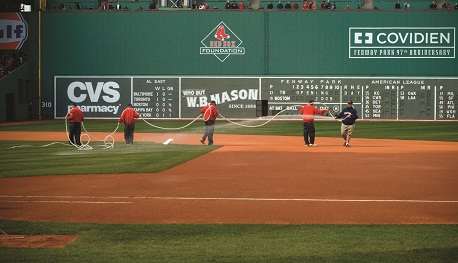 |
| Joyce Michaud/Dreamstime.com |
Water
Through watering playing fields, toilet flushing, hand washing, power-washing seats, and so on, large amounts of water are consumed both during and between events. Major water savings are available by using aerators and motion sensors on faucets, low-flow urinals and toilets, monitoring field moisture levels, and encouraging employees and fans to adopt water-saving behaviors both in the stadium and at home. Storm-water and gray-water catchment systems provide innovative opportunities as well. When seeking out facilities for competition, ask whether such steps are being taken.
Waste
The average professional or major collegiate sports event produces significant amounts of waste. The question is what to do with it and how to improve the system. Recycling and composting provide a huge opportunity to reduce waste and cut costs. Teams across the country are installing multi-bin sorting stations throughout their venues to encourage recycling and composting in the front- and back-of-the house, and are sourcing compostable service-ware to further decrease waste sent to the landfill. When you turn trash into recycling and compost, you can also save hundreds of thousands of dollars along the way. Installing recycle bins at sports events can help keep fans aware of what they discard (and where they discard it).
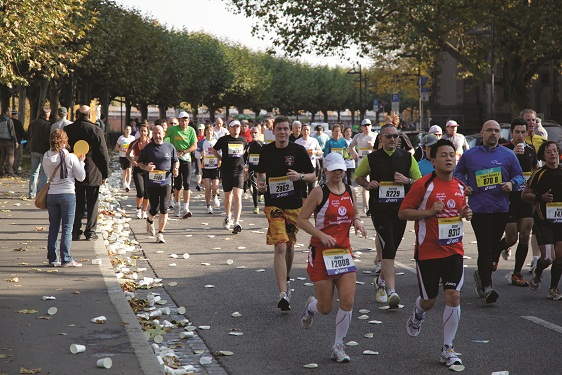 |
| Typhoonski/Dreamstime.com |
Purchasing
Most industries from across the business spectrum have a stake in sports. Sports is a $425 billion industry unto itself. When sports teams go green, and expect the same of their suppliers, it can make a major impact. Procurement initiatives help influence the supply chain toward providing more recycled content and recyclable materials at more competitive prices, especially in paper products. They also help encourage more socially responsible sourcing and community development through local purchasing. What are two easy steps to improving purchasing? Adopt “Environmentally Preferred Purchasing” and “Green Cleaning” policies. Ask your vendors to meet your guidelines.
Transportation
Getting fans quickly and safely to the event is equally as important as it is complicated. The carbon emissions from fan transportation can be a significant portion of the sports organization’s emissions. This issue is easiest to tackle in large cities with well-developed public transit systems. Regardless of the venue’s location, there are steps that can be taken to encourage ride sharing, the use of public transportation, and even biking and walking. Some venues provide bicycle parking and preferred parking spots for hybrid and electric vehicles as well as those who carpool. Partnering with your local municipality or state transportation agency can bring innovative public-private partnerships as well.
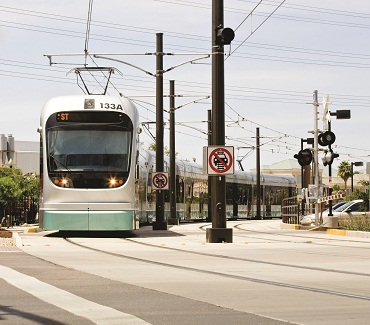 As mentioned earlier, sports are about performance, coming together and inspiring people. Team greening efforts not only create efficiencies and save money, they also provide new, unique ways to engage sponsors and fans. Fan response to teams and venues’ greening initiatives has been overwhelmingly positive. Consumers have been shown to reward companies that operate in an environmentally responsible fashion; sports teams and venues are no exception. Why not save money, operate more efficiently, reduce your environmental impact and inspire the community? That just seems like good business.
As mentioned earlier, sports are about performance, coming together and inspiring people. Team greening efforts not only create efficiencies and save money, they also provide new, unique ways to engage sponsors and fans. Fan response to teams and venues’ greening initiatives has been overwhelmingly positive. Consumers have been shown to reward companies that operate in an environmentally responsible fashion; sports teams and venues are no exception. Why not save money, operate more efficiently, reduce your environmental impact and inspire the community? That just seems like good business.

